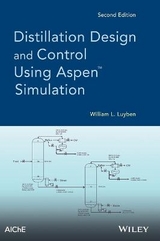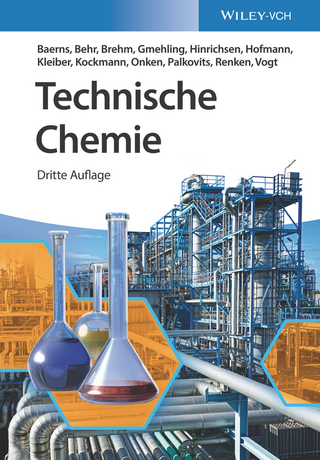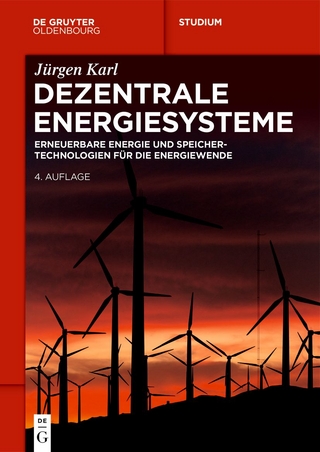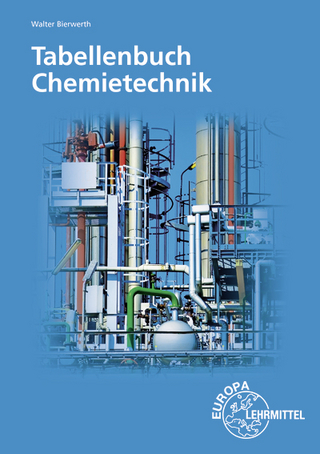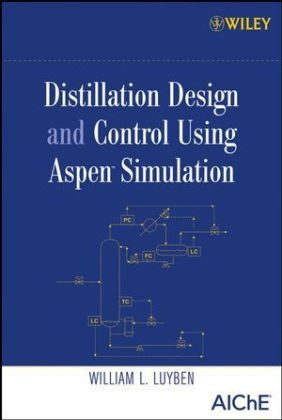
Distillation Design and Control Using Aspen Simulation
John Wiley & Sons Inc (Verlag)
978-0-471-77888-2 (ISBN)
- Titel ist leider vergriffen;
keine Neuauflage - Artikel merken
A timely treatment of distillationcombining steady-state designand dynamic controllability As the world continues to seek new sources of energy, the distillation process remains one of the most important separation methods in the chemical, petroleum, and energy industries. And as new renewable sources of energy and chemical feedstocks become more universally utilized, the issues of distillation design and control will remain vital to a future sustainable lifestyle. Distillation Design and Control Using Aspen Simulation introduces the current status and future implications of this vital technology from the dual perspectives of steady-state design and dynamics. Where traditional design texts have focused mainly on the steady-state economic aspects of distillation design, William Luyben also addresses such issues as dynamic performance in the face of disturbances. Utilizing the commercial simulators Aspen Plus and Aspen Dynamics, the text guides future and practicing chemical engineers first in the development of optimal steady-state designs of distillation systems, and then in the development of effective control structures.
Unique features of the text include: In-depth coverage of the dynamics of column design to help develop effective control structures for distillation columns Development of rigorous simulations of single distillation columns and sequences of columns Coverage of design and control of petroleum fractionators Encompassing nearly four decades of research and practical developments in this dynamic field, the text represents an important reference for both students and experienced engineers faced with distillation problems.
WILLIAM L. LUYBEN, PhD, is Professor of Chemical Engineering at Lehigh University. In addition to thirty-eight years of teaching, Dr. Luyben spent nine years as an engineer with Exxon and DuPont. Over the years, he has written eight books and more than 200 papers. He was the 2004 recipient of the Computing Practice Award from the CAST Division of the AIChE and was elected in 2005 to the Process Automation Hall of Fame.
PREFACE. 1 FUNDAMENTALS OF VAPOR-LIQUID PHASE EQUILIBRIUM (VLE). 1.1 Vapor Pressure. 1.2 Binary VLE Phase Diagrams. 1.3 Physical Property Methods. 1.4 Relative Volatility. 1.5 Bubblepoint Calculations. 1.6 Ternary Diagrams. 1.7 VLE Nonideality. 1.8 Residue Curves for Ternary Systems. 1.9 Conclusion. 2 ANALYSIS OF DISTILLATION COLUMNS. 2.1 Design Degrees of Freedom. 2.2 Binary MCCabe-Thiele Method. 2.3 Approximate Multicomponent Methods. 2.4 Analysis of Ternary Systems Using DISTIL. 2.5 Conclusion. 3 SETTING UP A STEADY-STATE SIMULATION. 3.1 Configuring a New Simulation. 3.2 Specifying Chemical Components and Physical Properties. 3.3 Specifying Stream Properties. 3.4 Specifying Equipment Parameters. 3.5 Running the Simulation. 3.6 Using "Design Spec/Vary" Function. 3.7 Finding the Optimum Feed Tray and Minimum Conditions. 3.8 Column Sizing. 3.9 Conclusion. 4 DISTILLATION ECONOMIC OPTIMIZATION. 4.1 Heuristic Optimization. 4.2 Economic Basis. 4.3 Results. 4.4 Operating Optimization. 4.5 Conclusion. 5 MORE COMPLEX DISTILLATION SYSTEMS. 5.1 Methyl Acetate/Methanol/Water System. 5.2 Ethanol Dehydration. 5.3 Heat-Integrated Columns. 5.4 Conclusion. 6 STEADY-STATE CALCULATIONS FOR CONTROL STRUCTURE SELECTION. 6.1 Summary of Methods. 6.2 Binary Propane/Isobutane System. 6.3 Ternary BTX System. 6.4 Multicomponent Hydrocarbon System. 6.5 Ternary Azeotropic System. 6.6 Conclusion. 7 CONVERTING FROM STEADY STATE TO DYNAMIC SIMULATION. 7.1 Equipment Sizing. 7.2 Exporting to Aspen Dynamics. 7.3 Opening the Dynamic Simulation in Aspen Dynamics. 7.4 Installing Basic Controllers. 7.5 Installing Temperature and Composition Controllers. 7.6 Performance Evaluation. 7.7 Comparison with Economic Optimum Design. 7.8 Conclusion. 8 CONTROL OF MORE COMPLEX COLUMNS. 8.1 Methyl Acetate Column. 8.2 Columns with Partial Condensers. 8.3 Control of Heat-Integrated Distillation Columns. 8.4 Control of Azeotropic Columns/Decanter System. 8.5 Conclusion. 9 REACTIVE DISTILLATION. 9.1 Introduction. 9.2 Types of Reactive Distillation Systems. 9.3 TAME Process Basics. 9.4 TAME Reaction Kinetics and VLE. 9.5 Plantwide Control Structure. 9.6 Conclusion. 10 CONTROL OF SIDESTREAM COLUMNS. 10.1 Liquid Sidestream Column. 10.2 Vapor Sidestream Column. 10.3 Liquid Sidestream Column with Stripper. 10.4 Vapor Sidestream Column with Rectifier. 10.5 Sidestream Purge Column. 10.6 Conclusion. 11 CONTROL OF PETROLEUM FRACTIONATORS. 11.1 Petroleum Fractions. 11.2 Characterization of Crude Oil. 11.3 Steady-State Design of PREFLASH Column. 11.4 Control of PREFLASH Column. 11.5 Steady-State Design of Pipestill. 11.6 Control of Pipestill. 11.7 Conclusion. INDEX.
| Zusatzinfo | Illustrations |
|---|---|
| Verlagsort | New York |
| Sprache | englisch |
| Maße | 183 x 252 mm |
| Gewicht | 764 g |
| Einbandart | gebunden |
| Themenwelt | Naturwissenschaften ► Chemie ► Technische Chemie |
| Technik | |
| ISBN-10 | 0-471-77888-5 / 0471778885 |
| ISBN-13 | 978-0-471-77888-2 / 9780471778882 |
| Zustand | Neuware |
| Haben Sie eine Frage zum Produkt? |
aus dem Bereich
